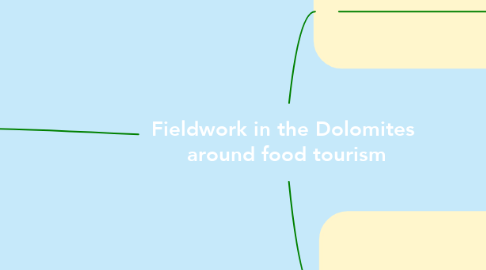
1. Research Approach and Design
1.1. Serendipity
1.2. Ethnographic way of seeing
1.3. Co-construction of knowledge with participants
2. Phases
2.1. Phase 1. Tops of the mountains: malga
2.1.1. W
2.1.1.1. June -Sept 2015
2.1.2. RQ
2.1.2.1. Who runs malga (farmer/tourism operator?)
2.1.2.2. How the malga runners live their agricultural and touristic role?
2.1.2.3. Which contradictions and which potentialities are relevant for the malga runners within their activity? / Which are the contradictions and which the potentialities of this “double” role?
2.1.3. N
2.1.3.1. 22 malga visited
2.1.3.2. 12 tourism activities observed in 7 malga
2.1.3.3. ... informal conversations (people)
2.1.3.4. Words written about 35.000: diary n.1, world diary 25.000; 12 entries of Day One App
2.2. Phase 2. Down in towns: barns and offices
2.2.1. W
2.2.1.1. September 2015 -February 2016
2.2.2. RQ
2.2.2.1. What malga means for all actors involved in agriculture-tourism activities?
2.2.3. N
2.2.3.1. 14 actors
2.2.3.2. 10 conceptual maps
2.2.3.3. 11 transcripts
2.3. Phase 3. Dialogues around food
2.3.1. W
2.3.1.1. February 2016 - June 2016
2.3.2. RQ
2.3.2.1. What local food means to the actors involved in agriculture-tourism activities?
2.3.2.2. What expectations do the actors (involved in agriculture-tourism activities) have toward local food and local producers?
2.3.3. N
2.3.3.1. 5 focus group
2.3.3.2. 20 people involved
2.3.3.3. 5 FG transcript and 5 reports shared
2.4. Phase 4. Participatory Action Research around Food Tourism
2.4.1. W
2.4.1.1. September 2016- April 2017
2.4.2. RQ
2.4.2.1. Which are the roles of cow farmers, cheese factory and tourism operators in food tourism?
2.4.2.2. How can collaboration can be fostered?
2.4.3. N
2.5. Phase 5. PAR Food Tourism Results
2.5.1. W
2.5.1.1. April - May 2017
2.5.2. R1
2.5.2.1. "adopt a barn"
2.5.3. R2
2.5.3.1. photo-recipes
2.5.3.2. face to face training opportunity
2.5.4. R3
2.5.4.1. public final conference
2.5.4.1.1. governance?
3. Research Main Objectives
3.1. To examine the relationship between agricolture and tourism
3.1.1. Micro-level of malga
3.1.2. Macro-level of territory/community
3.1.3. Governance

